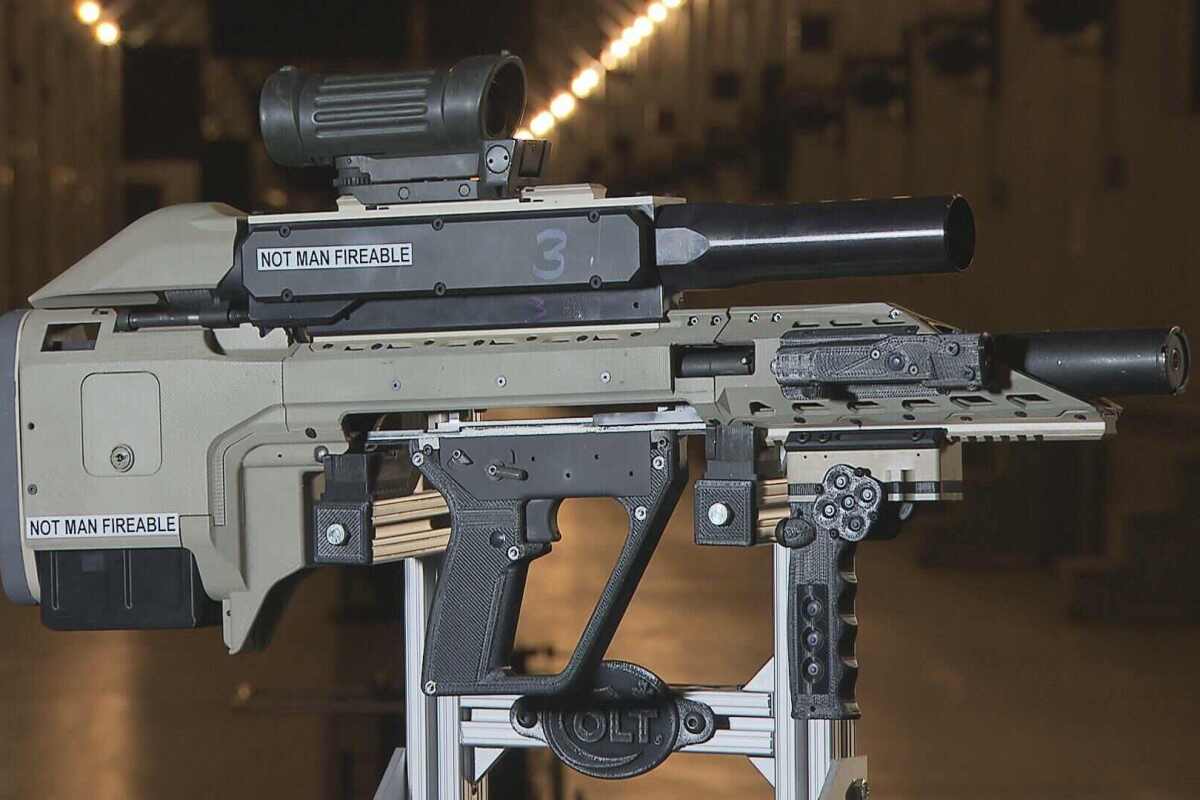Looking every bit like a weapon from a science fiction movie, the latest integrated assault rifle prototype being developed for the Canadian Armed Forces (CAF) is packed with some very smart weapons technology. Along with the ability to fire new lightweight telescoped ammunition, and a secondary effects module that adds either a three-round 40 mm grenade launcher or a 12-gauge shotgun, there is also a NATO-standard power and data bus to allow the attachment of smart accessories, such as electro-optical sights and position sensors that connect to command and control networks.
In development since 2009 via the Soldier Integrated Precision Effects Systems (SIPES) project, the futuristic assault rifle is being specifically developed for the CAF by Defence Research and Development Canada (DRDC) and Colt Canada. With a goal of providing a high-powered, but lightweight standard military rifle for the CAF for the next several decades, reducing weight was paramount. In this vein, when all of the components are finally pared down to their field-ready weights, it is expected that the fully-integrated prototype should weigh in at less than a CAF standard issue Colt C7 equipped with an M203 grenade launcher.
This weight reduction posed a particular challenge to researchers in the evolution of the prototype as replacements for heavy steel components were sought, fabricated, and developed. DRDC scientists in the Experimental Test Center in Valcartier, Quebec, looked for weight savings in all areas, including extensively testing and evaluating the new lightweight case telescoped ammunition (caseless rounds where the projectile is partly or completely enveloped by the propellant), especially in regard to its long-term stability and aging behavior.
Researchers also undertook studies on technology that allows the weapon to automatically procure and engage targets, along with developing sensors required to accurately locate targets spatially and share that target data with surrounding units and back to base. The next step in the research is to incorporate TrackingPoint-style projectile guidance technology.
"In the medium term, this weapon concept represents a lethal, flexible general-purpose platform," said Lieutenant-Colonel Serge Lapointe, from the Soldier Systems group in Director Land Requirements – Soldier Systems (DLR 5) of the Canadian Army. "It will be able to operate in all theaters of operations in the most complex terrain including urban areas, mountains, jungles, deserts and the Arctic."
Ergonomics were also an important factor in the weapon's development, with particular attention paid to how the soldiers interact with the weapon during a range of human factor trials performed by Human Systems Inc., under the supervision of DRDC scientists. This testing was considered paramount to meeting design criteria intrinsic to the Canadian Armed Forces Small Arms Modernization project.
Additional data was also acquired by both DRDC and CAF personnel whilst deployed in Afghanistan, which was invaluable in highlighting and defining critical performance and design elements that added greatly to the weapon's prototype development.
"The results of the first phase of the project have shown that DRDC expertise can be used to provide the Canadian Armed Forces with solid scientific data so they can make more informed decisions for their major acquisition projects," said Dr. Guy Vézina, the Director General for S&T Army, DRDC.
From a firepower viewpoint, the main weapon comprises a NATO standard "bullpup" style (magazine behind, rather than conventionally in front of the trigger mechanism) 5.56 mm NATO-standard caliber, semi-automatic rifle with selectable fire rate, whilst the secondary – additional – weaponry includes a 12-gauge (18mm) shotgun, and a 40-mm, three round capacity grenade launcher.
With the integration of electronic devices that will provide soldiers with the ability to transmit and receive data to and from a command and control network, the new assault rifle prototype promises to provide a much more informed and tactically adept experience for legions of future soldiers.
No announcement has been made as to the weapon's full release to the CAF or other armed forces.
The short video below details some of the many features of the new weapon.
Source: DRDC




